Every time I look at Rafał Milach and Tomasz Wiech’s photos I always catch myself wondering about an element that is often overlooked in photography: the gap between pictures. By “gap” I don’t mean the space intentionally or unintentionally left blank in a book, but rather the transition from one image to the next. Milach and Wiech avoid to use a single photographic genre – be it portraiture, or still-life – nor they introduce the actual subject of their works in a straightforward manner. We are left without instructions about what we are looking at: every time we leave one picture for the next one we are asked to make a quite difficult leap.
TOMASZ WIECH
Born in 1979, Tomasz Wiech is a freelance photographer. He studied at the Institute of the Creative Photography in Opava, Czech Republic. Between 2004 – 2010 he collaborated with the Polish daily Gazeta Wyborcza. He won the World Press Photo competition in 2008 and was a finalist of the Leica Oscar Barnack Award in 2011 and Magnum Expression Award in 2012. He was awarded a scholarship of Polish Ministry of Culture and National Heritage in 2010 and a scholarship of National Centre of Culture in 2011. He published the book Poland. In search of diamonds. The book was nominated Best Book of 2012 in Photo-Eye.
He lives and works in Kraków, Poland.
tomaszwiech.com
Polska, Tomasz Wiech’s last book, opens with an image of a big blind wall emerging behind a line of trees. The stylised sun that once was painted on it has now been removed, leaving visible only a pale discoloured trace of its rays. A sense of uncertainty is aroused by the fact that we are not right in front of the wall, but rather it seems that we’re moving away from it. The next pictures show a service car on a misty highway, a group of people enjoying the red balloons and heart-shaped stickers of the Wielka Orkiestra Świątecznej Pomocy (charity foundation – ed.), a peacock, oddly illuminated by a flash, dominating a decapitated statue.
Rafał Milach’s In the car with R offers a much more symbolic opening. Completely black curtains are slightly open on a dark background. In front of them, a white crack on the floor provides us the only aperture to escape the complete darkness of the image. On the opposite, the view of a bending street and the portrait that come after are extremely bright, so strongly overexposed that we can only distinguish familiar shapes (a street, a room, a man) without any detail.
RAFAŁ MILACH
Born in 1978, Rafal Milach graduated from the Academy of Fine Arts in Katowice, Poland and ITF (Institute for Creative Photography) in Opava, Czech Republic. Rafal’s photos were exhibited in several venues as C/O Berlin, Noorderlicht, Zacheta National Gallery of Art. His pictures and books have been awarded with World Press Photo, Pictures of the Year International and several other awards.
The last two books he has published are Black Sea of Concrete (2013) and In the Car with R (2012). In 2006, together with 10 other Central Eastern European photographers, Milach created the photo collective Sputnik Photos, to document, promote and spread knowledge on transition issues in CEE countries.
Milach’s exhibition of Black Sea of Concrete will be presented during the Fotofestiwal in Łódź, 8-16 June, 2013.
He lives and works in Warsaw, Poland. rafalmilach.com
This way of approaching the subject indirectly stresses the viewer’s struggle to situate and give meaning to the images. Such ambiguity is shared, as John Berger argued, by any kind of photograph, since pictures are by nature unable to represent continuity and the flux of the events. However, Milach and Wiech seem to particularly enjoy this potentially deceptive aspect of photography, as they refuse to give us many hints about how we should approach the images, but, at the same time, showing a clear interest for storytelling.
The relation between people and the space they inhabit, for example, is one of the recurring elements in their narrations. It is not disclosed in a revelatory manner, as if the images wanted to reveal everything all at once, but on the opposite, it acquires meaning picture after picture, through a slow process of clarification in which the fragments specify each other by mutual assonance and dissonance. It is in this sense that Wiech’s picture about the Wielka Orkiestra Świątecznej Pomocy balloons “needs” the picture with a flash-illuminated peacock. It is the celebration of Berger’s ambiguity and of the evasive character of photography.
I met Tomasz and Rafał in order to discuss about this and other (less speculative) aspects of their practice.
JACOPO FIORANCIO: How do you like the often abused word “project”? One might find it limiting, as it tries to set in advance the boundaries of an idea, or useful, as it helps to give structure to an intuition. Would you define your practice as a series of projects?
RAFAŁ MILACH: I try not to think too much about it. Of course, you use this word a lot. I don’t really care about how you call it, whether a project, a story, a book, an exhibition. Maybe it sounds more a long term commitment. Anyway, whatever you call it, the name in itself doesn’t give you the structure. The structure changes completely from project to project. For me it is about pictures and how your work is going to be presented. The name doesn’t actually matter.
TOMASZ WIECH: I don’t like the word. Too many people are using this word to describe their work. For me it is something technical. If you are a photographer and you call your work “project”, it means you know what you want to get, while in my practice I very often make mistakes, very often I have to go back, or I want to do something but then I think it is not a good idea. I don’t know where I’m going to end. The language is important, it shapes our reality. A project? Maybe of a building, of an house, maybe in science. I’m not sure it is a good word for pictures.
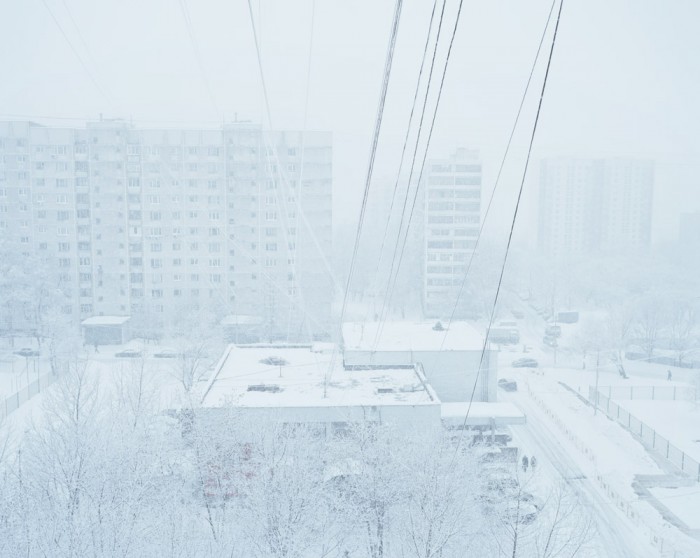 From the book 7 rooms, photo: Rafał Milach
From the book 7 rooms, photo: Rafał Milach
You both mix portraiture, still-life and landscape pictures, so that the subject of the work cannot be easily deduced by the genre. The effect is often a destabilising one; at the beginning one doesn’t know what he is actually looking at. How do you think different kind of pictures can work together and give meaning to each other?
RM: These little puzzles build the stories. You can tell beautiful stories about people without showing them, by using landscape, interiors, still-life. It’s different from project to project.
In In the car with R it was a mix of everything. I needed it, I found that I was trapped in some way of telling the stories, of approaching the subject and visualizing it. Luckily In the car with R, turned to be this different experience from the previous projects, maybe because I worked with so many cameras at the same time. Maybe it sounds funny that your thinking is determined by the camera, but in my case sometimes it works like that. When I work with large format I’m very calm and I compose the image much more precisely, while with the digital camera I would just rush.
Documentary photography is a huge lie, a manipulation of what you see. This was the case of the Icelandic trip. The core of the joy I get from working on documentary projects of that sort is that I actually don’t discover anything, and I don’t have to, as most of the things have been already discovered. I’d rather introduce mistery than discovery. I just like to question, to make people confuse about what they used to know about some places, situations, people. In terms of reportage, this is somehow a big failure, because I don’t tell stories about places. I try to get to know the feeling of the place, but I actually end up with nothing more than my few personal notes.
TW: It depends. The composition of Polska, for example, is the result of a very long work. I started as a photographer in a daily, and during my work I took many ironic pictures about absurdities in Poland. After sometimes I realised that I got a collection that could describe the place where I live. In 2010 I got a scholarship to continue that work and I prepared a list of places and events where I wanted to go. I was firstly looking for journalistic pictures of situations among people, but while I was driving to those places I saw many landscapes which I couldn’t avoid to shoot. So I added landscapes to the pictures about people. Then finally, after working on the book, there were more landscapes than situational pictures.
I found out the similarity between this work and Something Private while I was talking about my pictures in a public event. I caught myself describing in the same way the strategy I followed in the two works: it’s about space, about how people build their space and how this space “builds” people. In Something Private it took me a long way to understand that. I expected offices to be something different, that those places were completely inhuman. But finally I was looking at something very human, and I realised that the pictures had changed the aim of the work.
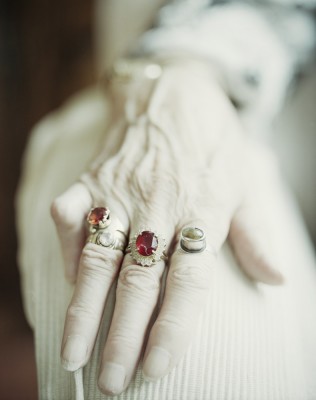 From the book In the car with R, photo: Rafał MilachYour pictures of people are very often portraits. In them we see people posing for you, people with whom you probably had a talk with just before or after the picture. Are you usually looking for interaction with them? Could you tell the story behind one of those images?
From the book In the car with R, photo: Rafał MilachYour pictures of people are very often portraits. In them we see people posing for you, people with whom you probably had a talk with just before or after the picture. Are you usually looking for interaction with them? Could you tell the story behind one of those images?
RM: In 7 rooms there was a long term relation with the subject. I was working with these micro-worlds, with these personal stories for a very long period. In the case of In the car with R, the story was about this roadtrip, about movement. Nothing set, nothing fixed. Of course I met some people. For example Maria, she was an amazing lady who I visited two or three times.
There are different pictures of her, this is the most developed personal story throughout the book. She made a hostel out of her house after her husband had passed away. She literally opened her doors to strangers and she didn’t change anything.
She made the red ring out of her wedding ring. What is funny is that when we had an exhibition on the other side of Iceland, her daughter came by chance to see it, without knowing that her mother was a part of it. She recognised her hand and she called her to tell her: “Hey mum, you are in an exhibition in Akureyri!”
TW: The woman with the mask was in Sierakowo Sławieńskie, a very small village where there is a thematic park about Tolkien’s books. She was an actress there, playing for children that go there during holidays. She was playing in the last stage, after her there was only Gollum playing. It was very hot and she was just resting there. She knew that I was taking pictures but she was ok with that. I prefer to take quick pictures, and I think I don’t look as an enemy to the people, so I usually don’t have problems with people while I’m shooting them.
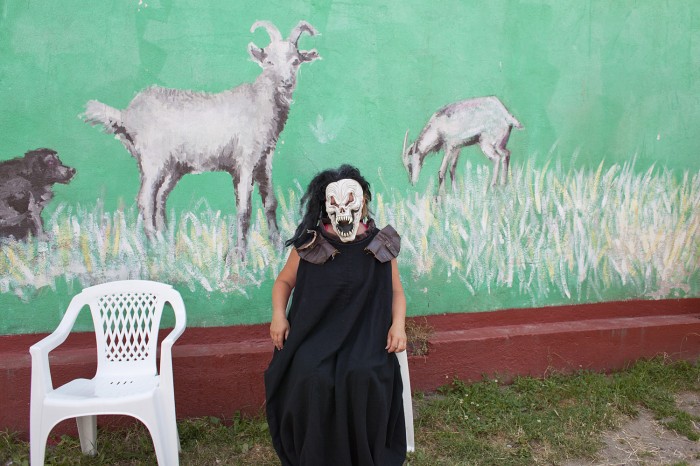 From the book Polska, photo: Tomasz Wiech
From the book Polska, photo: Tomasz Wiech
A great deal of the work final appearance is determined by the editing process. When I’m browsing the book I’m looking at the order you chose for the images and I wonder if that is the only “right” one or, if sorted in another way, the pictures might say anything different to me. How does the sequencing process help you define your idea?
RM: In the last book, Black Sea of Concrete, I wanted to give the impression that you are waking up in the morning and you have to force your consciousness to realise where you are. You wake up in some bright place and then you are getting used to the light, the world starts to become more concrete, you can distinguish the surroundings and position yourself. It’s all about trying to understand the place. You get this impression of incredible spaces in Iceland and I wanted to give this feeling, that’s why I probably incorporated so many landscapes. The pictures of people work like check points. People always attract your attention, you have to stop and interact with them. In general it’s a really loose and impressionist narration.
While I was shooting I was so hungry for images. Then I came back with all these images and I started to discuss them with the curator and the designer trying to get what this trip was and what it meant to me. Anyway the intellectual process came just after the work. Working and discussing with the designer is amazing. While you are making the book you can strengthen your idea, think about which is the best way to tell the story. This is a fascinating process. Sometimes you reinvent the story, because it turns out that there could be other solutions.
TW: The first idea with Polska was to arrange the pictures according to the seasons, while other time it is something about the colours. It is hard to say, it is partially a visual and partially a conceptual process.
In the book you have to create some kind of narrative. We wanted to build something that has the most boring pictures at the beginning and the strongest ones more frequently in the rest of the book. It was important to put the stronger pictures between the weaker ones in order to create a sort of background from which the former could stand out. If you have 60 or 100 pictures and you have to select 42, it is easy to sequence them at the beginning while it gets harder when you are left only with few ones to pick from.
There is a different “right” order for each different medium, and maybe for each different moment. I didn’t want to make another book with material about Poland. I worked on it for three years, but I’m sure that if somebody would edit the same pictures, he could create another book. For me this is it, and the book meant for me the end of the work with this material.
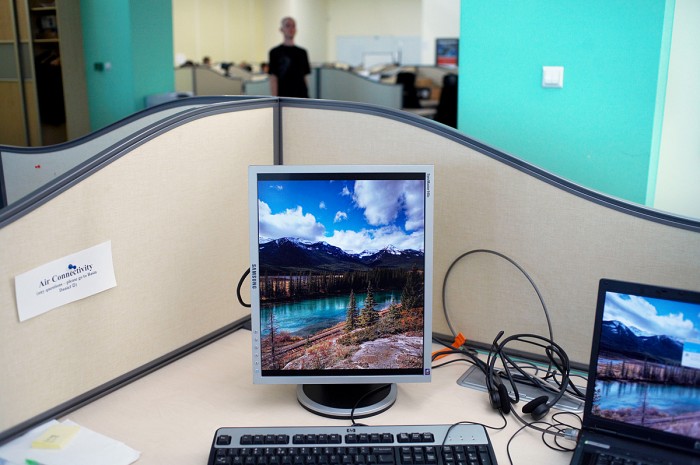 From Something Private, photo: Tomasz Wiech
From Something Private, photo: Tomasz Wiech
Your books include short texts that accompany the images. As it happens with your pictures, text is often composed of several fragments that gain full meaning only when read as a whole. Which kind of directions do you give to the writers?
RM: In the last project in Iceland, me and Huldar Breidfjord travelled together and worked on two parallel stories. Each one was very autonomous. There was just a very basic rule we agreed on before the travel, that is, we couldn’t describe a situation the other was working on. Of course, since we travelled together, there are few matching points, but generally they are two parallel very personal narrations. It is very symbolic to me, because we were literally closed in one car. At the beginning it was quite hard to get along, imagine two big egos in a small car space. He tried to push to not to do this story about the ring road, as it turned out to be the most touristic thing possible. But I was quite stubborn, I wanted to do this kind of road trip.
TW: I wanted to publish my pictures with some text that could add something to my pictures. Not describing them, rather it should exist as something around them. Finally I asked Michał Olszewski, a friend from Gazeta Wyborcza (Polish daily – ed.). As a journalist he had been in many places in Małopolska region. I also knew his book about Poland, a collection of texts called Zapiski na biletach, meaning “notes on tickets”. He was writing for the local edition of Gazeta Wyborcza for few years. Each Friday he published a short text about his impressions on his journeys. In 2010 or 2011 he published some of those texts in one book. I read it when I was on a train to Warsaw and I found it was reflecting exactly what taking pictures is for me.
I didn’t tell him what to write nor the form he had to use, whether a single long text or many short ones. I just showed him the pictures and asked him to write something that could give a different light to them.
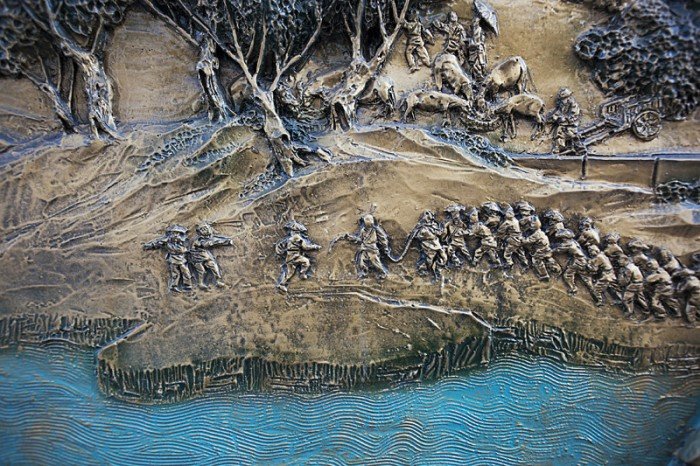 From the blog Simple Observations, photo: Tomasz Wiech
From the blog Simple Observations, photo: Tomasz Wiech
You also keep or used to keep a blog. A blog is completely different from other more structured ways to present photos. What do/did you use it for?
RM: I used to keep it. There was no pressure. I see something, I shoot it, I put it on the blog and then I forget about it, like a diary. I have very weak memory, sometimes I just need to picture something to remember. It was a kind of cure for my project thinking. Without big concepts, just reacting to what you see. The blog is something that reminds me a bit of street photography, which I generally don’t do, a quick reaction to what you encounter and come across every day. Funny, sad, absurd, normal, boring things: all of that can be recorded. When I started the blog I had this need of doing things without any purpose, but maybe I freed myself enough, so that now I can do various projects at the same time and that is fulfilling me. I don’t feel the urge to run the blog any more but it might come back.
TW: I started Simple Observations in 2007 when I was a photographer of Gazeta Wyborcza. When you are working for a daily, only few pictures are published and very often they are not those you like. Thus, it was firstly a place to publish the unpublished pictures that I liked. When I started working about Poland, I was publishing there the pictures from my travels. I used it as a kind of diary, but a year ago I felt that I was posting always the same pictures, the same motifs, the same subjects, and I thought of closing it. Now I changed my idea of the blog. I added text and I post pictures which are sometimes clichés of well-known images, while others want to show different ways and strategies of telling stories through photography.








